First Paper, First Author
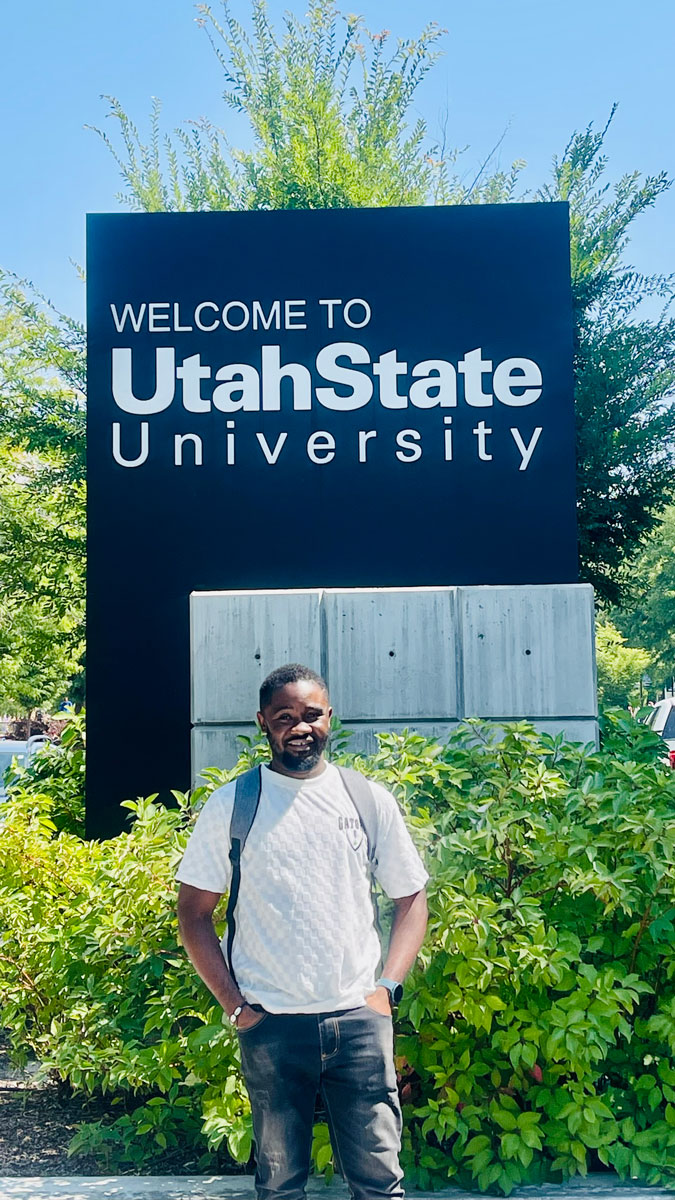
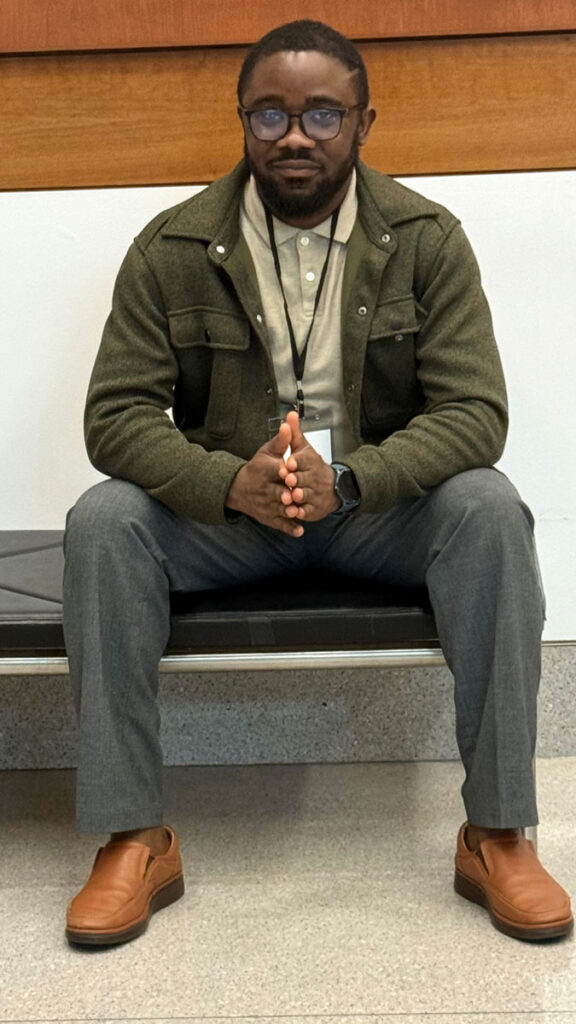
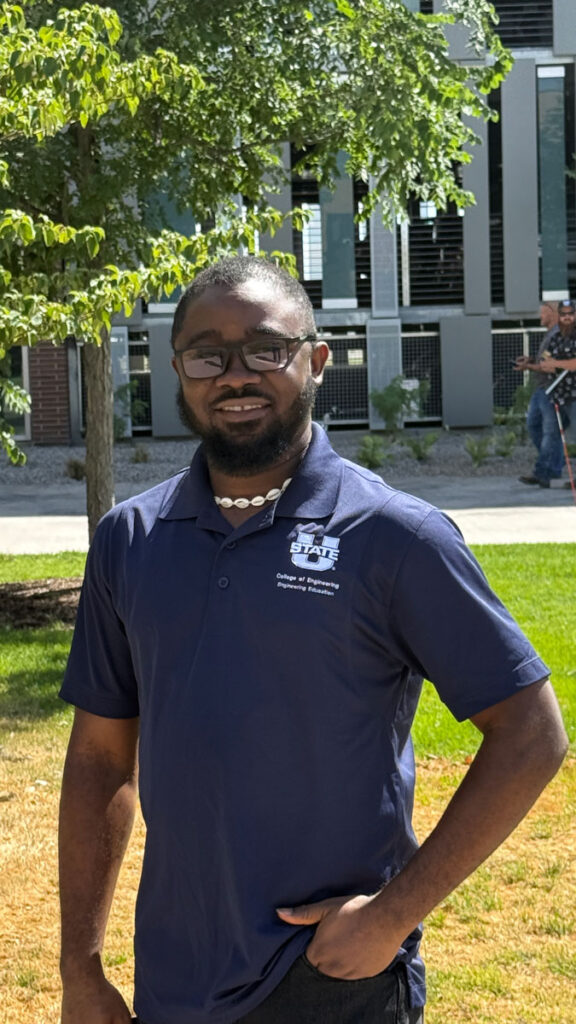
Through ASPIRE, PhD candidate Foeday Zinnah published his first paper at the beginning of his Ph.D. career. He was also listed as the first author, an important accomplishment in the field of academia.
“Being listed as first author in my first year of the Ph.D. program is both a great honor and a significant professional accomplishment,” Zinnah shared. “It reflects the dedication, hard work, and support I received from my academic advisor and collaborators.”
This first-year engineering education student at Utah State University took a deep dive into workforce development with his paper, “Work in Progress: Impact of Non-Degree Credentials on STEM Workforce Development — A Systematic Literature Review.” The publication involved a rigorous, intensive research and analyzation process that was highly collaborative, according to Zinnah.
“Publication represents a significant scholarly undertaking — a substantial amount of thinking about a research topic or question that matters to you and (hopefully) others,” said Assistant Professor of Engineering Education Angela Minichiello, Zinnah’s faculty mentor. “I enjoy the enthusiasm and energy that Foeday brings to this work. I also deeply appreciate his desire and willingness to think deeply during each step of the research process.”
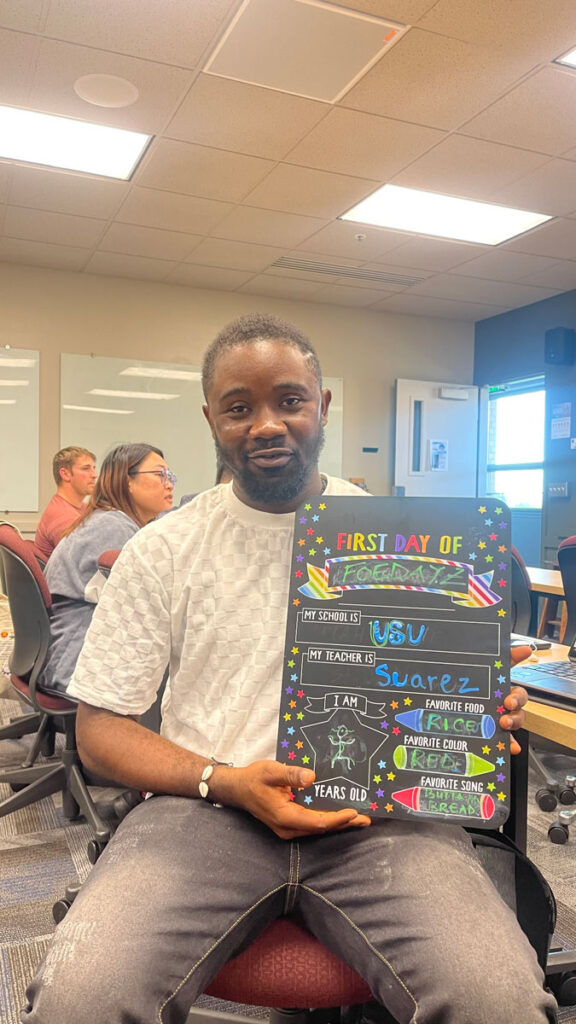
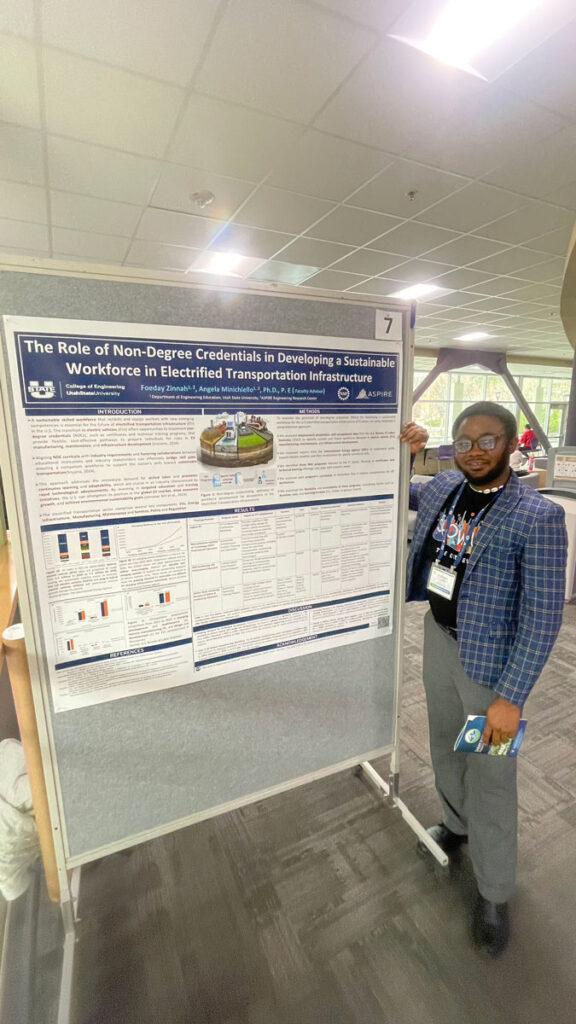
Zinnah presented his research at the 2025 ASEE Annual Conference & Exposition in Montreal, Quebec, Canada. This international conference took place June 22-25, 2025.
Though challenging and stressful at times, this experience of publishing his research — made possible through his work at ASPIRE — is a significant personal and academic milestone.
“In general, this opportunity gave me the confidence that I can make meaningful contributions to my field early in my Ph.D. journey,” Zinnah said. “Professionally, it positioned me as an active participant in the academic conversation around engineering workforce development, providing visibility among researchers and industry partners.”
Minichiello considers research publication a big part of ASPIRE’s dedication to student mentorship and academic professional development.
“Publishing new research can be incredibly motivating for students because it helps them develop their identities as researchers, and as members of and contributors to their fields,” said the Utah State University professor. “I feel that going through publication process with students as co-authors and first authors is a vital part of my role and responsibility as a graduate research advisor and mentor.”
A Launching Point
Though finished with this successful publication, its effects are ongoing. Zinnah classified it as the “launching point” for ongoing research and collaboration for his dissertation.
“Each time I see that my paper has been read by others, I am reminded that my work is contributing to strategies that ASPIRE, industry, academics, partners, and policy makers could use in their future workforce frameworks,” he said. “This publication is more than a single study — it is the starting point for ongoing research toward my dissertation, and a collaboration opportunity.”
Based on lessons learned from this publication, Foeday is already working on another publication.
“This experience inspired me to pursue a more challenging journal article that is now under review and stands a potential chance of publication,” he said. “I see it as my responsibility to continue contributing to the research community, advancing ASPIRE’s mission, and fostering collaboration between academia and industry to prepare a competent, workforce-ready generation of engineers.”
Zinnah’s publication is available online for those interested in learning more. Students can reach out to Melanie Conrad, ASPIRE’s student engagement coordinator, to learn more about publication opportunities at ASPIRE.
About ASPIRE:
ASPIRE, a National Science Foundation Engineering Research Center headquartered at Utah State University, leads groundbreaking research and development to accelerate electrification. With over 400 global collaborators, ASPIRE focuses on creating seamless, affordable electrified transportation systems, accessible for all vehicle classes, along with the public infrastructure needed to support them. By reducing emissions, improving air quality, and fostering economic growth through job creation and workforce training, ASPIRE’s work spans engineering, social science, policy, and business. Partnering with top universities, industry leaders, and community groups, ASPIRE is driving the future of advanced transportation. Learn more at aspire.usu.edu.
Contacts:
Melanie Conrad
Student Engagement Coordinator
ASPIRE ERC
Writer:
Kayleigh Kearsley
Marketing & Communications Intern
ASPIRE ERC